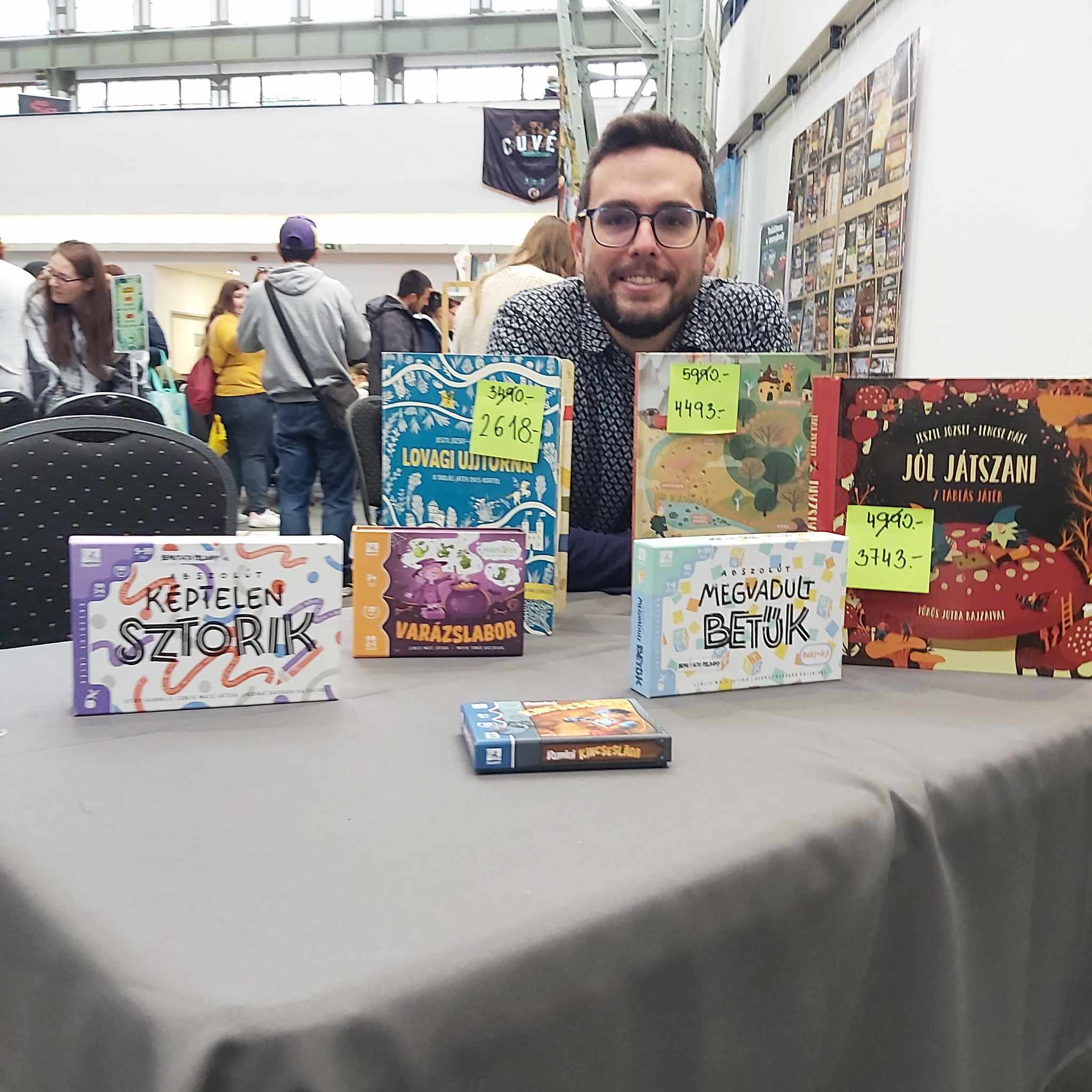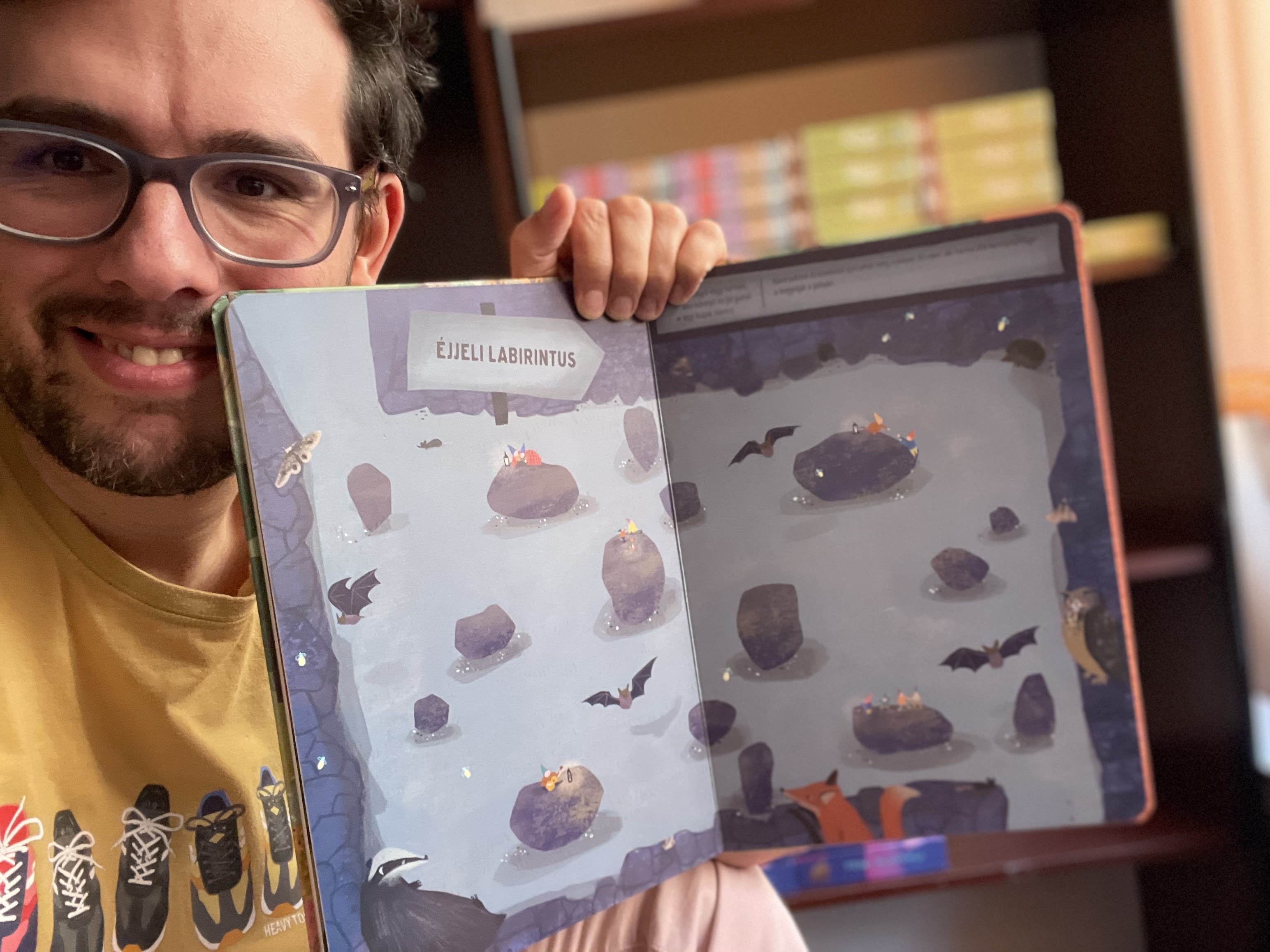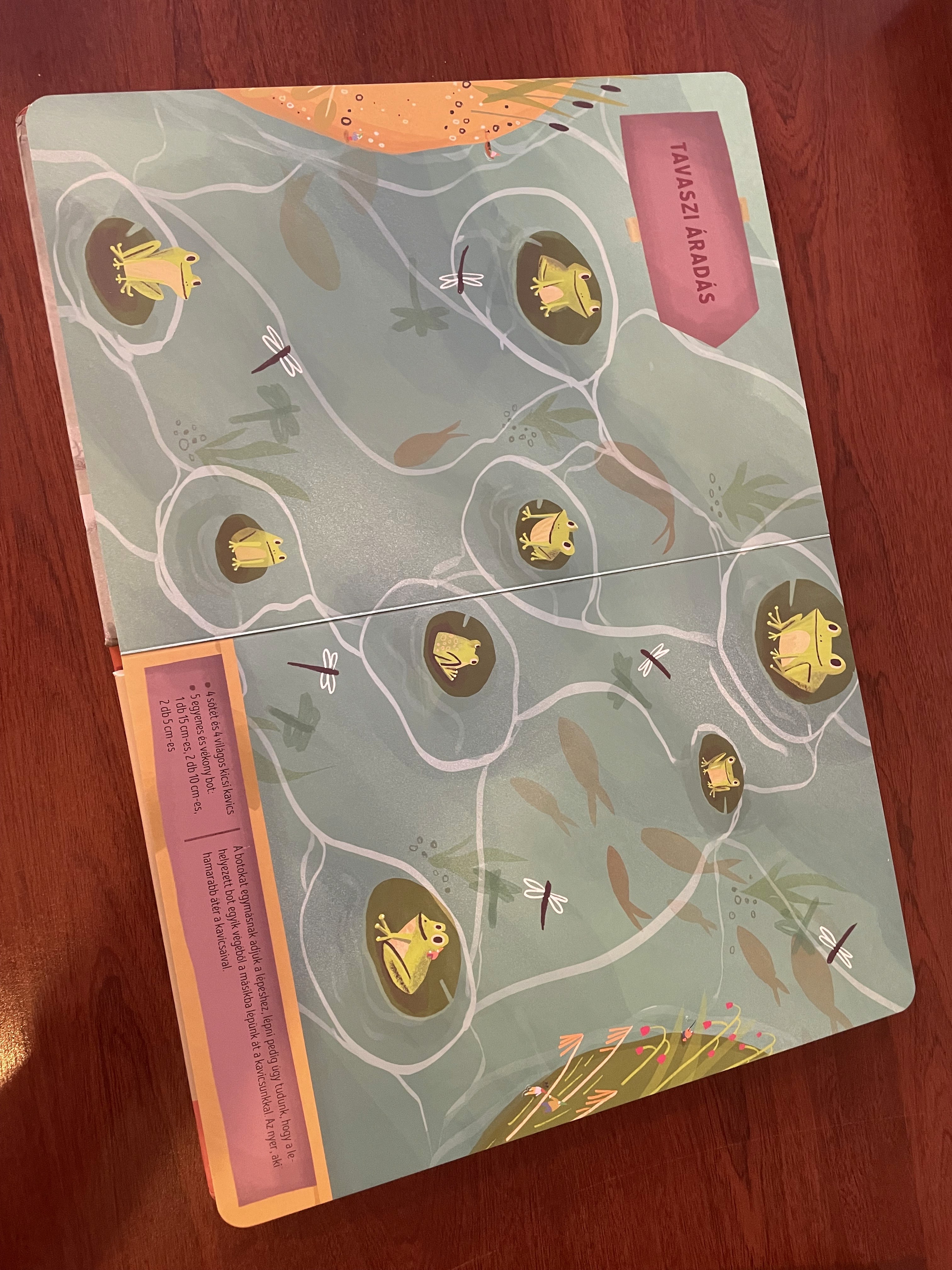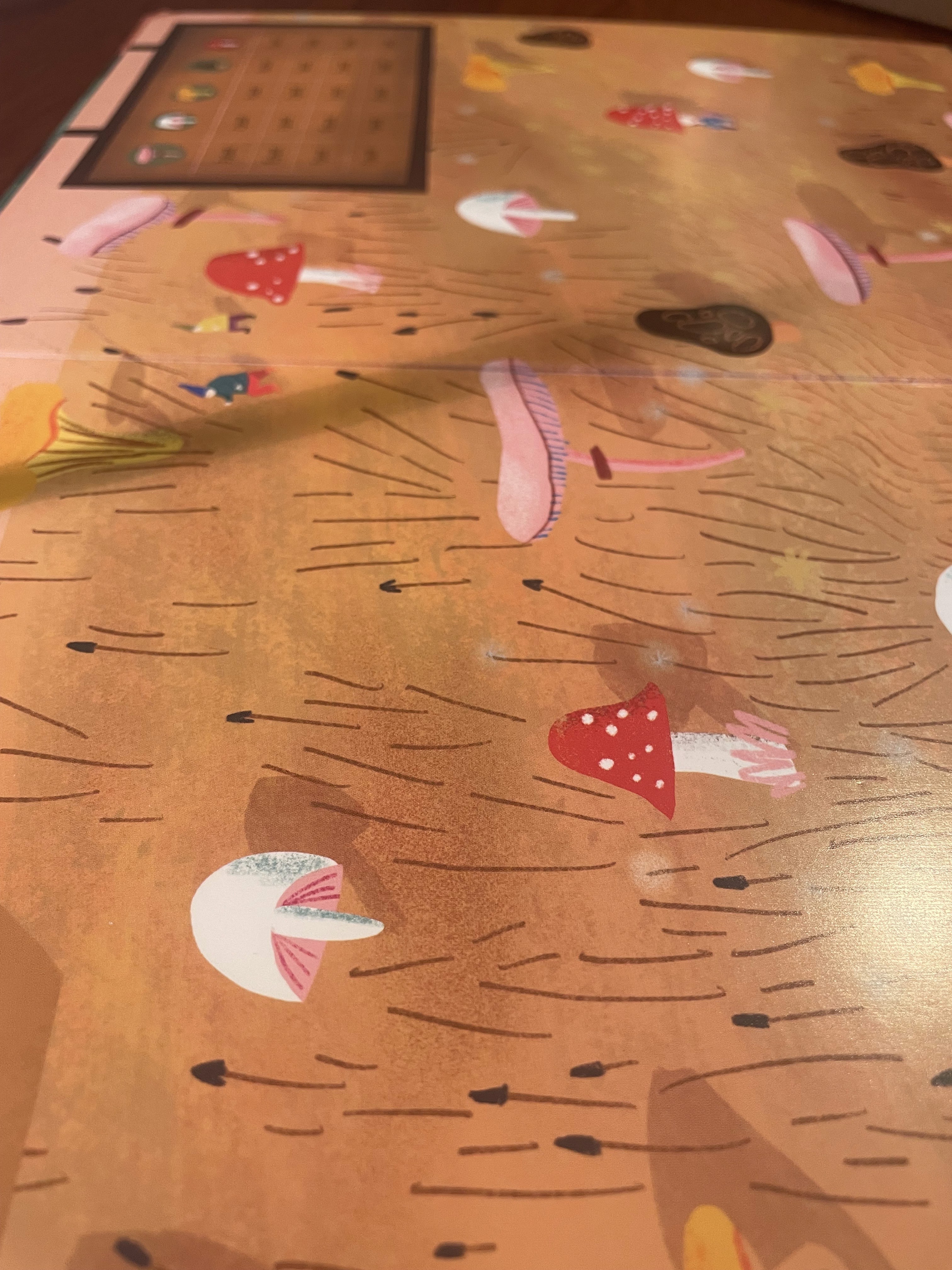Do you love hiking, camping, or simply spending time outdoors? Board game lovers don't have to leave their passion at home! In this article, we explore fun and creative outdoor games that require no equipment—just the natural elements around you. Whether you're looking for family-friendly nature games, something to play on a hiking trip, or a unique way to connect with nature, we've got you covered!
In 2022, we published our book Manóváros (Gnome City) together with József Jesztl. Its subtitle, "7 Games for the Outdoors," perfectly describes its concept: we designed board games that can be played while hiking, using the book itself as the game board. Each double-page spread serves as a unique playing surface.
The rules are simple—most games require collecting pebbles, sticks, or other natural materials (there's even a ruler and size guide at the end of the book to help with measurements). Just gather what you need, and the game begins!
For now, the book is only available in Hungary—but if you're interested in publishing it elsewhere, feel free to reach out! 😉 In any case, these games can be played without the book as well, with just a few small modifications.
Here are some suggestions for how to adapt them!

Night Maze
As you can see in the picture, the game board is very simple. Just build a rectangle out of small stones and place additional obstacles inside to create a maze-like structure. Make sure there's an exit on opposite diagonal corners.

Next, find two lightweight natural objects—like seeds or small dried fruits—that you can blow across the board. And now, the fun begins!
How to Play:
- Next, find two lightweight natural objects—like seeds or small dried fruits—that you can blow across the board.
- Each player starts from one of the exits, and you take turns blowing once per turn to move your object through the maze.
- The first player to reach the exit on the other side wins!
- You can't blow directly on your opponent's object to move it away, but if your own movement causes theirs to shift, that's completely legal.
Spring Flood
Spring Flood is not a dexterity game, but rather a logic-based challenge. Start by marking a rectangular playing area, for example, using sticks. In the picture, you can see two islands—these serve as the starting and finishing points. Each player must reach the opposite island to win.

What you need:
- 4 dark and 4 light-colored pebbles (as player pieces)
- 5 straight, thin sticks of different lengths (all shorter than the playing area)
- Additional pebbles to represent obstacles, mimicking the frogs on leaves in the image
How to play:
- On your turn, place one of your sticks next to one of your own pieces (dark or light pebble).
- Move your piece to the opposite end of the stick.
- Rules for stick placement:
- Sticks cannot touch each other.
- Sticks cannot touch the leaf (frog) obstacles.
- Once all five sticks are placed, they must be removed one by one and placed again, continuing the movement process.
- The first player to move all four of their pieces to the other island wins!
Shadow Caster
And now, let's take a look at the Shadow Caster, which we mentioned earlier. Shadow Caster is a perfect game for outdoor adventures, requiring only sticks and natural light. The goal of the game is to score as many points as possible. You earn points based on how the shadow of your placed stick falls on the board—in this case, on the mushrooms.

What you need:
- A playing area
- Objects on the board that are worth points (in the original game, poisonous mushrooms were worth negative points)
- Sticks for casting shadows
How to play:
- Set up the board with objects that will score points.
- Agree on the point values for each object—these should change in every round.
- Cover the board so no one can see it while placing their stick.
- Each player places their stick in the ground.
- Remove the cover and observe how the shadows fall.
- Count the points based on where your shadow lands—whoever scores the most wins!
Be Bold and Creative
These are just a few specific ideas from a specific book, but their real purpose is to encourage you to be bold and creative.
Play is all around us—even in the forest. Everything can be a game, and you can play with anything if you pay close enough attention.
Build tiny gnome houses from sticks, stones, leaves, or whatever you find—it will be great fun, and along the way, you'll learn so much. Most importantly, because you're connecting—to nature and to each other.
Have your own favorite DIY outdoor game? Let us know in the comments!
We'd love to hear your new ideas, and thoughts on our above list. Join the conversation!
No spam, ever. Unsubscribe anytime.
Spread the Fun of Learning!
Love our content? Show your support by sharing our page with your friends and help us inspire more families and educators with the joy of learning through play!
